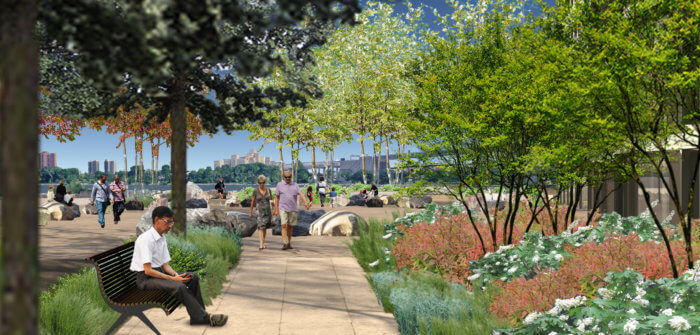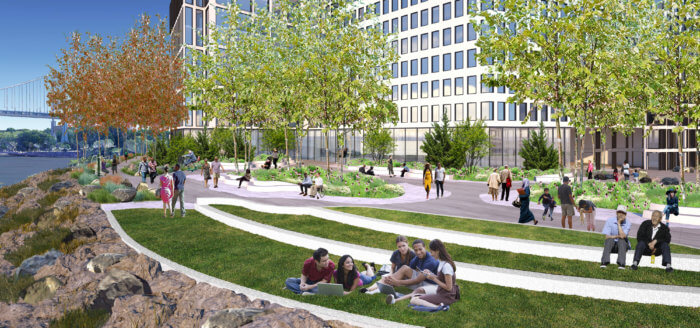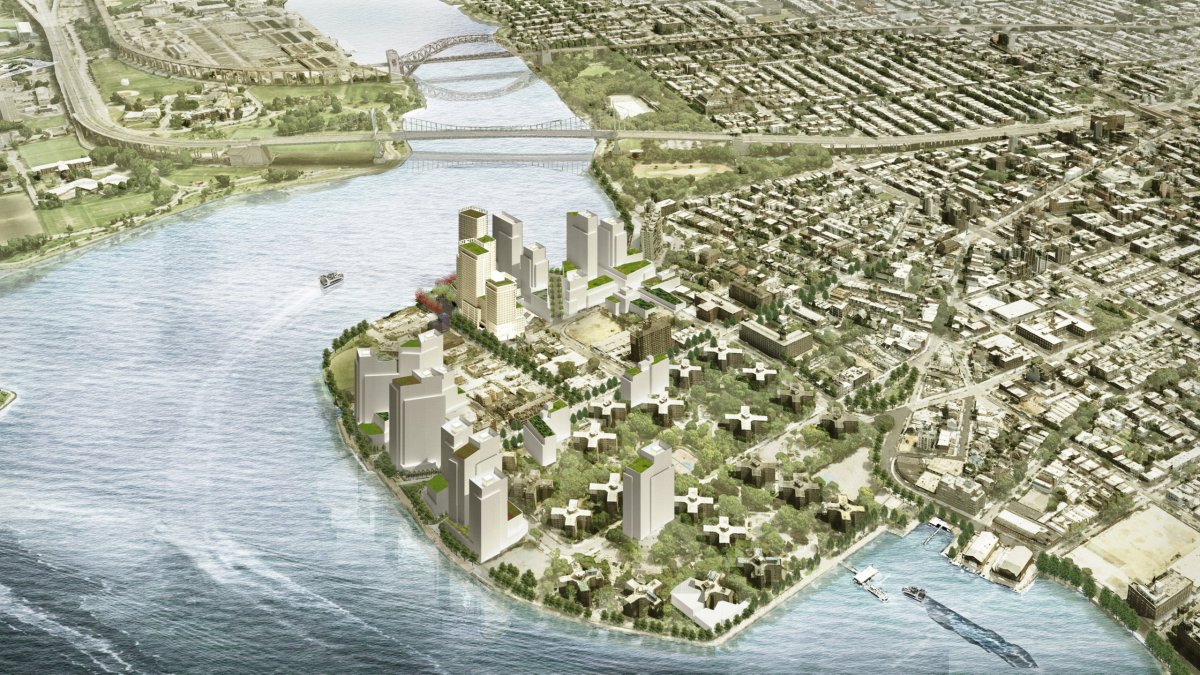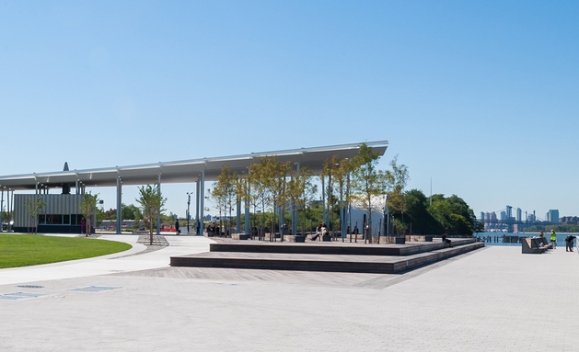Astoria community leaders on April 28 met a proposal for a new waterfront property near Third Street and 26th Avenue with open arms. The project, proposed by Studio V Architecture, would create at least 350 affordable housing units and 500 jobs and create an estimated $600 million investment in the neighborhood.
Throughout the planning stages of the project, those running the project remained engaged with the community. This included organizing and taking suggestions from focus groups; outreach to the New York City Housing Authority (NYCHA) and local civic organizations; partnering with local nonprofits; and making four presentations to the community board. This engagement allowed the planners to explain their plans for the project while also receiving valuable feedback.
One notable change made based on community feedback was the ratio between affordable units with one, two and three bedrooms. Based on that feedback, the waterfront property’s plan has gone from having 1,190 one-bedroom units to around 950, 175 two-bedroom units to around 315 and 35 three-bedroom units to approximately 75.
According to Rahema Ulli, who spoke on behalf of multiple community representatives, the proposed project creates a lot of opportunities for the area. She then read a letter on behalf of Community Church of Astoria Pastor Corwin Mason.
“As an advocate for my community, I’m always looking for projects that would bring truly affordable options to our residents,” Pastor Mason wrote. “New affordable housing in western Queens is not a desire but rather a need. This development will bring much-needed housing, new jobs and a community space to benefit residents of all ages. I strongly believe that this project is a step in the right direction, working with reliable nonprofit partners to ensure local hiring and job training.”
In addition to housing and jobs, the project would help the community in multiple ways. The street would be raised up to nine feet in order to improve coastal resiliency. Shuttle service will be made available in the area to transport people to and from the subway. Rain gardens would be made at the site, acting as a sponge to help drain stormwater.
In addition to the buildings, a big focus for the project was creating waterfront public space and a motor court along Third Street that would make it primarily accessible for pedestrians and bikers as they approach the waterfront space. Multiple view terraces would connect to the waterfront space as well. Third Street would be heavily landscaped with infiltrator tree pits and stoop gardens along the side. With only two car lanes on the street, a lot of emphasis was placed on the sidewalks in an effort to pull people to the waterfront.

According to Studio V Architecture founder Jay Valgora, this would be a geothermal project, meaning that, other than the emergency generator, no carbon fuels would be used during the project. There are also plans to increase green space on the property, including adding some to the roofs.
“All of the fuels that run the building will be done through geothermal, which uses the temperature differences of the earth in order to create a much more sustainable method of both cooling and warming the building,” Valgora said. “We’d love to extend this to regular residential projects in New York City to really create innovative solutions.”

The site was previously home to Astoria Steel before being purchased by the current owners in 2013. At the time it was purchased, the area was highly contaminated, resulting in the site being fully remediated. Structures, sub-grade utilities and a concrete bunker were demolished during the process. In total, 8,150 cubic yards were excavated. Cleanup work on the site began in 2014 and was completed in 2019.































